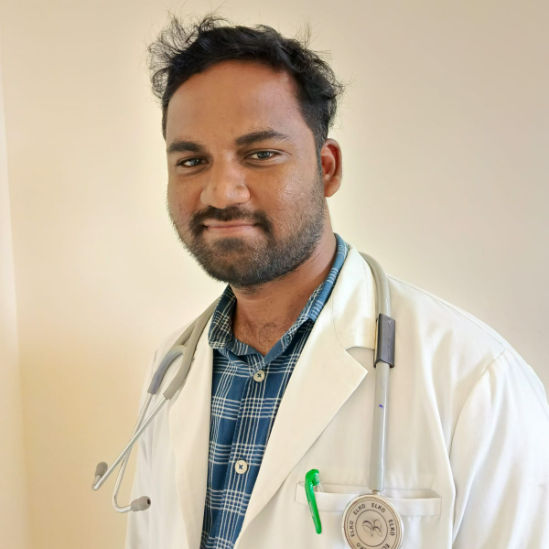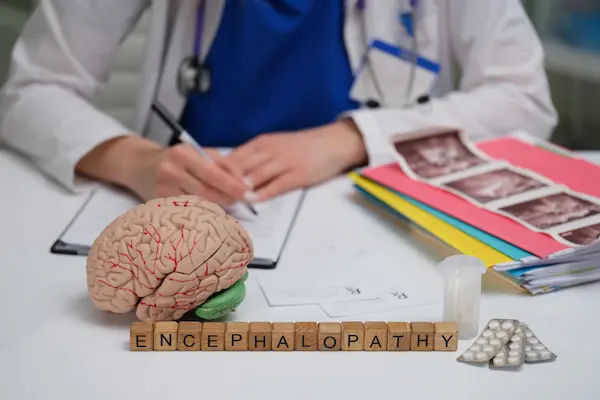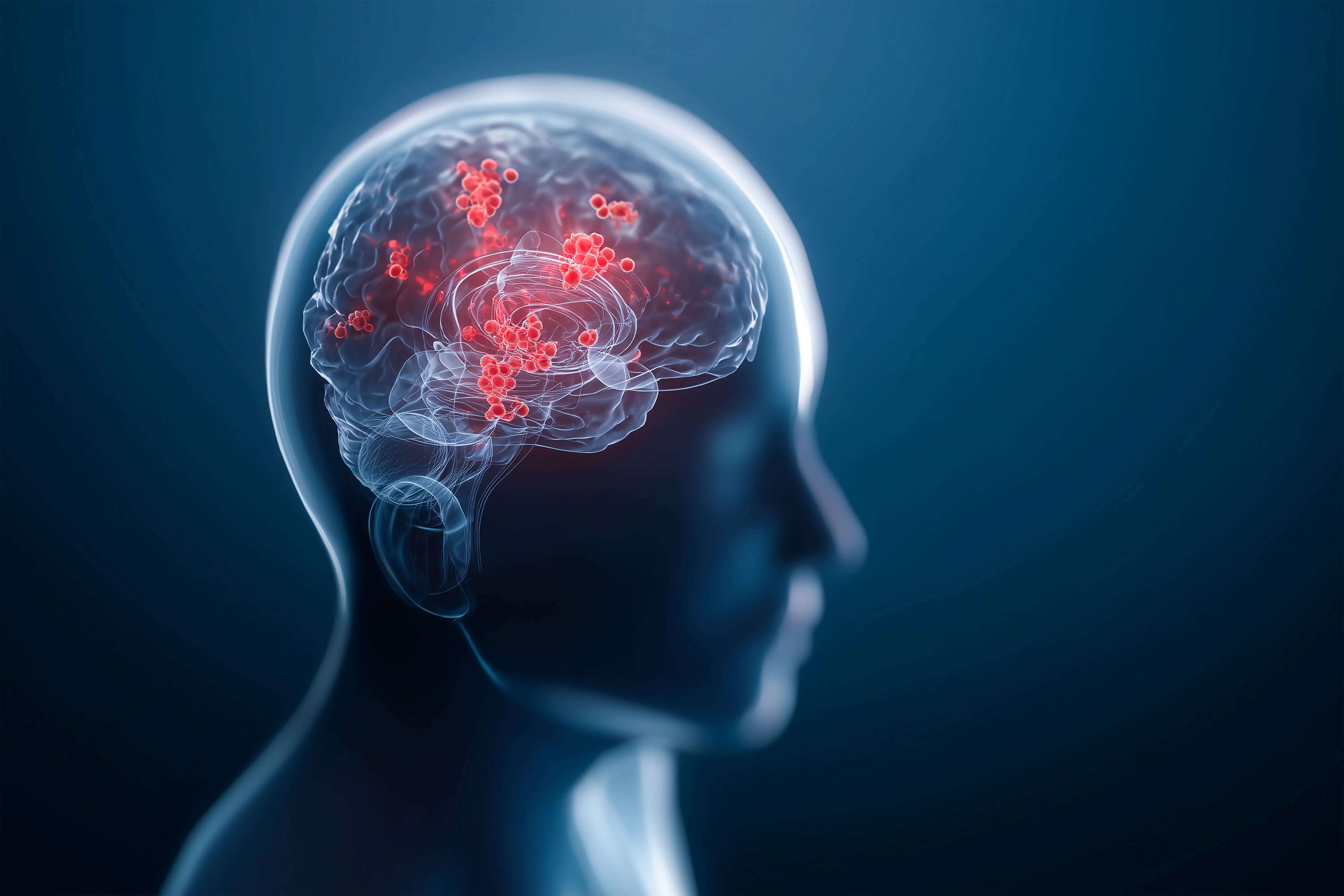What Leads To Signs Of Acute Encephalitis Syndrome And Diagnosis
Learn what leads to acute encephalitis syndrome (AES), how to recognise its signs, the stepwise diagnosis process, treatment essentials, prevention strategies, and post-acute recovery guidance.


Introduction
Acute encephalitis syndrome (AES) is a broad, emergency term used when a person—often a child—develops sudden fever, altered mental status (confusion, disorientation, coma), and/or seizures due to inflammation of the brain. AES can have many causes, from viruses like Japanese encephalitis (JE) and herpes simplex virus (HSV) to bacteria, parasites, toxins, and autoimmune conditions. Because it progresses quickly and can be life-threatening, spotting early signs of acute encephalitis syndrome and obtaining a timely diagnosis are critical to preventing severe complications.
In this guide, we’ll explain what leads to the signs of AES, how to recognise red-flag symptoms, what tests doctors use to confirm the diagnosis, and how treatment and recovery typically proceed. We also cover special scenarios (such as monsoon-season outbreaks or lychee-associated illness), prevention strategies, and caregiver action plans. Throughout, we translate medical information into practical steps for families and provide up-to-date, authoritative references. If you suspect AES in yourself or a loved one, treat it as a medical emergency and seek urgent care immediately. For follow-up questions after hospital discharge, you can consult a doctor online with Apollo 24|7.
AES at a Glance: What It Is and Why It Matters
Acute encephalitis syndrome (AES) is a clinical umbrella term used when someone develops sudden fever with altered mental status (confusion, unusual behaviour, disorientation, coma) and/or new seizures, often alongside headache or neck stiffness. AES is not a single disease; it is a syndrome that can result from many different causes, infectious and non-infectious alike. While the phrase “encephalitis” means inflammation of the brain (usually due to infection like HSV or JE), AES is broader. It encompasses encephalitis, encephalopathy (brain dysfunction without inflammation, such as from low blood sugar or toxins), and sometimes meningitis (inflammation of the membranes around the brain). That breadth is helpful in triage: it alerts clinicians to move fast, stabilize the patient, and then identify the cause with targeted tests.
AES matters because it can progress rapidly and cause lasting neurological problems or even death, especially in children. In several Asian countries, Japanese encephalitis is a well-known cause, but it accounts for only a fraction of AES cases—many are due to enteroviruses, scrub typhus, dengue, HSV, or non-infectious triggers. The risk is higher during monsoon or post-monsoon seasons when mosquito vectors thrive, in regions with lower vaccination coverage, and among malnourished children. For the public, the key message is simple: if someone with a recent fever becomes confused, unusually drowsy, or starts seizing, seek emergency care immediately. Early recognition saves lives.
What Leads to the Signs: Causes and Risk Factors
Here's what contributes to AES and the risk factors involved:
Many different problems can lead to the same outward signs of acute encephalitis syndrome because multiple pathways can inflame or impair the brain.
Infectious causes:
- Viral: Herpes simplex virus (HSV), Japanese encephalitis virus, enteroviruses, varicella zoster, measles (rare, in unvaccinated), Nipah virus in certain outbreaks. These viruses can directly infect brain tissue, producing fever, seizures, and altered mental status.
- Bacterial: Severe bacterial meningitis (e.g., pneumococcus), tuberculosis, and leptospirosis can spill over into encephalitis-like presentations.
- Rickettsial and zoonotic: Scrub typhus is an important, treatable cause of AES in parts of South and Southeast Asia—think high fever, rash or eschar, and neurological symptoms.
- Parasitic: Cerebral malaria is a key differential in endemic areas.
Non-infectious causes:
- Autoimmune encephalitis (e.g., anti-NMDA receptor): Often follows a viral illness and presents with memory issues, psychiatric symptoms, and seizures.
- Metabolic/toxic encephalopathy: Severe hypoglycemia, hepatic failure, or toxins (notably lychee-associated toxins in malnourished children) can cause sudden brain dysfunction.
- Post-infectious demyelination (ADEM): An inflammatory response after infection or vaccination with fever, multifocal neurological deficits, and encephalopathy.
Risk factors and patterns:
- Seasonality: Monsoon/post-monsoon spikes parallel mosquito activity and flooded environments.
- Geography and exposure: Rural rice fields for JE exposure; forested areas for scrub typhus.
- Nutritional status: Malnutrition increases vulnerability to toxins and infections.
- Vaccination status: Lack of JE vaccination increases risk in endemic regions.
Clinicians use CSF analysis in encephalitis and MRI findings in encephalitis to pinpoint cause and guide therapy. For families, the important point is that diverse causes can produce similar “viral brain inflammation signs,” hence the need for comprehensive evaluation.
Recognising the Signs and Symptoms of AES
Here's how to identify early warning signs and red flags:
- Early warning signs: High fever, severe headache, vomiting, photophobia (light sensitivity), unusual irritability or lethargy, neck pain or stiffness.
- Neurological red flags: New seizures, confusion, agitation, hallucinations, disorientation, slurred speech, difficulty waking, weakness on one side, loss of balance, or coma. In infants, look for poor feeding, high-pitched cry, bulging fontanelle, or reduced responsiveness.
- Systemic clues: Rash (consider dengue, scrub typhus), jaundice (liver failure), or respiratory symptoms (some viral causes).
In children vs. adults:
- Children often deteriorate faster and may not verbalise symptoms. Watch behavior changes and responsiveness closely.
- Adults may present with focal neurological deficits (weakness, speech issues) or pronounced memory/behaviour changes, particularly in HSV encephalitis.
Unlike routine “viral fever,” AES warning signs—especially any change in mental state or seizure—should never be “watched at home.” Time-sensitive treatments (e.g., acyclovir for HSV encephalitis) are most effective when started early. If a person has a seizure lasting >5 minutes, repeated seizures, difficulty breathing, or cannot be aroused, call emergency services immediately.
When to Seek Emergency Care and What to Do Before You Reach the Hospital
Here's what you should do when AES is suspected:
When to go now:
- Any seizure in a person with a fever.
- Confusion, disorientation, extreme drowsiness, or inability to wake.
- Stiff neck plus high fever and headache.
- Persistent vomiting with severe headache or behaviour change.
- Rapidly worsening symptoms over hours.
Consult Top Specialists
First aid while waiting for an ambulance:
- For a seizure: Lay the person on their side on a flat surface, loosen tight clothing, cushion the head, and clear nearby hazards. Do not place anything in the mouth. Time the seizure.
- Check breathing. If breathing stops, begin CPR if trained.
- Avoid giving food, drink, or medications by mouth when the person is not fully alert.
- Keep the environment quiet and dim to reduce agitation.
Information to bring:
- Recent travel (rural exposure, mosquito exposure, lychee or other unusual foods), vaccination history (especially JE), prior illnesses/medications, and onset timeline.
- If possible, a list of long-term medications and allergies.
Do not delay hospital care to arrange outpatient tests. AES is a medical emergency. After discharge or for less urgent follow-up troubleshooting of related issues, you can consult a doctor online with Apollo 24|7 for guidance on recovery, medications, and supportive tests when appropriate.
How Doctors Diagnose Acute Encephalitis Syndrome
Here's the stepwise approach doctors follow to diagnose AES:
Stepwise approach:
- Stabilisation first: Airway, breathing, circulation, and immediate check for hypoglycemia (low blood sugar). Dextrose may be given if blood glucose is low to prevent brain injury.
- Early empiric treatment: Many hospitals start acyclovir promptly to cover HSV encephalitis while workup proceeds, and give broad-spectrum antibiotics if bacterial meningitis is possible.
Key tests explained for families:
- Blood tests: Complete blood count, electrolytes, liver and kidney function, blood glucose, inflammatory markers. These help detect metabolic encephalopathy, organ dysfunction, and infection clues.
- CSF (lumbar puncture): A small sample of spinal fluid is analysed for cells, protein, glucose, and specific pathogens via PCR or serology. CSF analysis in encephalitis is central to diagnosis and can distinguish viral from bacterial causes.
- Pathogen testing: PCR for HSV, enteroviruses, and specific tests for JE (IgM antibody in CSF/serum), dengue, scrub typhus (IgM/rapid tests in the right context), tuberculosis, and others depending on geography.
- Neuroimaging: CT is often used first to rule out bleeding or raised pressure. MRI findings in encephalitis can be highly informative (e.g., temporal lobe changes suggest HSV; thalamic lesions suggest JE).
- EEG: Assesses seizure activity and encephalopathy patterns.
Differential diagnosis:
- Cerebral malaria, stroke, toxic/metabolic encephalopathy, autoimmune encephalitis, ADEM, and intracranial abscess or tumours.
Families often ask why “tests are negative” even when AES is obvious. Up to half of AES cases may lack an identified pathogen due to timing, limited test sensitivity, or non-infectious causes. Doctors then use patterns from MRI/EEG/CSF and response to therapy to guide care.
Initial AES evaluation must be in hospital. For later monitoring, Apollo 24|7 offers convenient home collection for follow-up blood tests as advised by your doctor.
Perfect! Here’s the rest of the article fully compiled in continuation from where we left off, keeping all content intact, buffer sentences added, and headings properly formatted:
Special Scenarios and Case Examples
Here's a look at unique AES scenarios and examples:
Japanese encephalitis (JE):
In parts of Asia, JE is a leading vaccine-preventable cause of viral encephalitis. It is transmitted by Culex mosquitoes, with peak risk during/post-monsoon. JE accounts for a minority of AES cases but is severe when it occurs. MRI may show thalamic involvement; JE IgM in CSF helps confirm diagnosis.
Lychee-associated hypoglycemic encephalopathy:
Investigations in Muzaffarpur, India, found that toxins naturally present in lychee (hypoglycin A and MCPG) can precipitate acute hypoglycemic encephalopathy in malnourished children who skip evening meals, leading to overnight low blood sugar and morning seizures/coma. Rapid dextrose administration dramatically improved outcomes. This is encephalopathy rather than infectious encephalitis but presents as AES—highlighting why checking blood glucose is lifesaving.
Autoimmune and post-infectious encephalitis:
After a viral illness, some patients develop autoimmune encephalitis (e.g., anti-NMDA receptor) or ADEM. These can present with psychiatric symptoms, movement disorders, and seizures. MRI and autoantibody testing guide diagnosis, and treatment may include steroids, IVIG, or plasmapheresis.
Travel-related scenarios:
Travellers to endemic regions may acquire JE, dengue, or rickettsial infections. Pre-travel vaccination (JE, where indicated) and mosquito precautions reduce risk.
Treatment Essentials: What Happens in the Hospital
Here's what hospital treatment for AES involves:
Supportive care first:
- Stabilise airway, breathing, and circulation. Correct hypoxia, treat shock, and normalise blood glucose. Seizure control with benzodiazepines, then antiseizure medications as needed.
- Manage fever and intracranial pressure if elevated. Monitor neurological status closely, often in ICU for severe cases.
Empiric and targeted therapy:
- Antivirals: Acyclovir is started promptly if HSV encephalitis is suspected because delays increase risk of poor outcomes.
- Antibiotics: Broad-spectrum coverage if bacterial meningitis or sepsis is possible, refined after CSF results.
- Antiparasitics/antirickettsials: Doxycycline for suspected scrub typhus in appropriate settings.
- Immunotherapy: High-dose steroids, IVIG, or plasmapheresis for autoimmune encephalitis or ADEM, guided by specialists.
Complication management:
- Refractory seizures/status epilepticus, hyponatremia, SIADH, respiratory failure, and secondary infections require intensive monitoring and multidisciplinary care.
Initial treatment may include hospital protocols that combine rapid dextrose, acyclovir, antibiotics, seizure control, and expedited lumbar puncture/neuroimaging. If your condition does not improve or new symptoms arise after discharge, consult a doctor online with Apollo 24|7.
Prevention Strategies You Can Start Today
Here's how to reduce the risk of AES:
Vaccination and vector control:
- JE vaccination: Recommended in endemic regions and for certain travellers. Check local schedules and ensure children complete the series.
- Mosquito protection: Use EPA-approved repellents, long sleeves, bed nets (preferably insecticide-treated), and eliminate standing water around homes. Community fogging and larval control help during outbreaks.
Food safety, nutrition, and hydration:
- Children should not skip evening meals, especially during lychee season in affected regions. Balanced nutrition reduces risk of hypoglycemic events related to lychee toxins.
- Stay hydrated and avoid unpasteurized or suspect foods during febrile illnesses.
Personal and community actions:
- Seek care early for febrile illnesses with neurological symptoms.
- Support local vector control programs and vaccination drives.
- For travellers: Consult a travel clinic about JE and other region-specific risks 4–6 weeks before departure.
Recovery, Rehabilitation, and Follow-Up
Here's what recovery looks like after AES:
After the acute phase, some patients recover fully, while others experience lingering issues: memory problems, speech or movement difficulties, mood changes, or seizures. Early, structured rehabilitation improves outcomes:
- Neurorehabilitation: Physical therapy for strength and balance, occupational therapy for daily activities, speech and language therapy for communication and swallowing.
- Cognitive and emotional support: Neuropsychological evaluation, school reintegration plans, and counselling for anxiety/depression.
- Medical follow-up: Monitoring for seizure recurrence, medication side effects, and endocrine or metabolic sequelae.
Most families benefit from a written recovery plan with milestones (e.g., sitting balance, school hours, fatigue management). Keep a symptom and medication diary. If symptoms persist beyond two weeks after discharge or new neurological issues arise, consult a doctor online with Apollo 24|7.
Understanding Test Results: A Family Guide
Here's how to interpret common AES tests:
- JE tests: A positive JE IgM in CSF supports a diagnosis of Japanese encephalitis; serum IgM is helpful but less definitive. A negative test early on may turn positive later; doctors may repeat tests.
- HSV PCR: A highly specific test on CSF. If early negative but suspicion remains high, repeat testing may be recommended while continuing acyclovir.
- “Unknown cause”: Even with modern PCR and serology, many AES cases have no identified pathogen. Clinicians integrate MRI, EEG, clinical course, and response to treatments to guide care.
- MRI patterns: Temporal lobe involvement suggests HSV; thalamic/brainstem lesions may suggest JE; multifocal white matter lesions can point toward ADEM.
- Autoimmune panels: May take time. Treatment decisions sometimes proceed based on clinical and MRI findings before results return.
Test results inform treatment but are pieces of a bigger picture. Ask your medical team to explain what each finding means for current care and long-term recovery.
Myths vs. Facts about AES
Here's a clear breakdown of common misconceptions:
- Myth: AES always means a viral infection. Fact: AES is a syndrome; it can be viral, bacterial, rickettsial, autoimmune, or metabolic.
- Myth: Wait and watch if a child with fever sleeps more. Fact: Unusual drowsiness, confusion, or seizures with fever are emergencies.
- Myth: JE vaccination eliminates all AES risk. Fact: JE vaccine prevents JE but not other causes of AES. You still need mosquito protection and early care for neurological symptoms.
- Myth: If early tests are negative, it can’t be serious. Fact: Early tests can be negative; doctors often treat based on clinical suspicion while repeating tests.
- Myth: Recovery is always quick if you survive AES. Fact: Many patients need weeks to months of rehabilitation for full recovery.
A Practical Checklist for Parents and Caregivers
Here's what families should do during risk periods:
- Keep JE vaccinations up to date; use mosquito nets and repellents consistently.
- Ensure children eat regular evening meals and stay hydrated; avoid letting them sleep on an empty stomach, especially during lychee season in affected regions.
- At first sign of neurological symptoms (confusion, unusual drowsiness, seizure), seek emergency care immediately.
- Prepare an emergency info pack: vaccination records, medication list, allergies, prior illnesses, travel history, and key contacts.
- After discharge: Arrange rehabilitation appointments early, keep a symptom/medication diary, and know seizure first aid.
For guidance on recovery planning, medication side effects, or test scheduling after hospital care, consult a doctor online with Apollo 24|7.
Conclusion
AES is not one disease but a high-alert sign that the brain may be inflamed or impaired. While the causes vary—from HSV and Japanese encephalitis to scrub typhus, autoimmune inflammation, or hypoglycemia—the outward signs often look similar: fever plus new confusion, seizures, or profound drowsiness. Prompt emergency care enables doctors to stabilise vital functions, give time-critical treatments, and run the right tests to determine the cause and guide therapy.
With the right care, many people recover fully. Prevention is powerful too: vaccination where indicated, mosquito protection, good nutrition, and early evaluation for neurological symptoms. After hospitalisation, structured rehabilitation and close follow-up help regain strength, function, and confidence.
If you or your child has concerning symptoms, do not wait—go to the nearest emergency department. For follow-up questions, prescription reviews, or lab monitoring, consult a doctor online with Apollo 24|7. Swift, informed action is the best way to protect the brain and safeguard recovery.
Consult Top Specialists
Consult Top Specialists

Dr. Vivek D
General Physician
4 Years • MBBS
Bengaluru
PRESTIGE SHANTHINIKETAN - SOCIETY CLINIC, Bengaluru

Dr Syed Mateen Pasha
General Physician
2 Years • MBBS
Bengaluru
PRESTIGE SHANTHINIKETAN - SOCIETY CLINIC, Bengaluru

Dr. Harshendra Jaiswal
General Physician/ Internal Medicine Specialist
12 Years • MBBS , MD (General medicine)
Kolkata
108 DHANA DHANVANTARI Clinic, Kolkata
(25+ Patients)
Dr. Thandra Ramoji Babu
General Physician/ Internal Medicine Specialist
5 Years • MBBS, DNB(General Medicine)
Warangal
Sai Ram multi-specialty hospital, Warangal

Dr. M L Ezhilarasan
General Practitioner
6 Years • MBBS
Visakhapatnam
Apollo 24|7 Clinic - Andhra Pradesh, Visakhapatnam
Consult Top Specialists

Dr. Vivek D
General Physician
4 Years • MBBS
Bengaluru
PRESTIGE SHANTHINIKETAN - SOCIETY CLINIC, Bengaluru

Dr Syed Mateen Pasha
General Physician
2 Years • MBBS
Bengaluru
PRESTIGE SHANTHINIKETAN - SOCIETY CLINIC, Bengaluru

Dr. Harshendra Jaiswal
General Physician/ Internal Medicine Specialist
12 Years • MBBS , MD (General medicine)
Kolkata
108 DHANA DHANVANTARI Clinic, Kolkata
(25+ Patients)
Dr. Thandra Ramoji Babu
General Physician/ Internal Medicine Specialist
5 Years • MBBS, DNB(General Medicine)
Warangal
Sai Ram multi-specialty hospital, Warangal

Dr. M L Ezhilarasan
General Practitioner
6 Years • MBBS
Visakhapatnam
Apollo 24|7 Clinic - Andhra Pradesh, Visakhapatnam
Consult Top Specialists

Dr. Vivek D
General Physician
4 Years • MBBS
Bengaluru
PRESTIGE SHANTHINIKETAN - SOCIETY CLINIC, Bengaluru

Dr Syed Mateen Pasha
General Physician
2 Years • MBBS
Bengaluru
PRESTIGE SHANTHINIKETAN - SOCIETY CLINIC, Bengaluru

Dr. Harshendra Jaiswal
General Physician/ Internal Medicine Specialist
12 Years • MBBS , MD (General medicine)
Kolkata
108 DHANA DHANVANTARI Clinic, Kolkata
(25+ Patients)
Dr. Thandra Ramoji Babu
General Physician/ Internal Medicine Specialist
5 Years • MBBS, DNB(General Medicine)
Warangal
Sai Ram multi-specialty hospital, Warangal

Dr. M L Ezhilarasan
General Practitioner
6 Years • MBBS
Visakhapatnam
Apollo 24|7 Clinic - Andhra Pradesh, Visakhapatnam
More articles from Encephalopathy
Frequently Asked Questions
What is the difference between encephalitis and acute encephalitis syndrome?
Encephalitis is inflammation of the brain, typically from infection. AES is a broader emergency term that includes encephalitis, encephalopathy, and sometimes meningitis when the initial presentation is unclear.
How is AES diagnosed in the hospital?
Doctors stabilise the patient, check blood glucose, start empiric treatments, and perform tests such as CSF analysis, PCR/serology for viruses (HSV, JE), MRI, and EEG.
Can Japanese encephalitis vaccination prevent all AES?
No. The JE vaccine prevents Japanese encephalitis but not other causes of AES. Mosquito protection and early medical evaluation are still essential.
When should I go to the hospital for possible AES symptoms?
Immediately if there are seizures, confusion, extreme drowsiness, severe headache with neck stiffness, or rapidly worsening symptoms. Treat AES as an emergency.
What happens after discharge if symptoms linger?
Many patients need rehabilitation and follow-up. If symptoms persist beyond two weeks or new issues arise, consult a doctor online with Apollo 24|7 to review the recovery plan and arrange any needed tests.



 A Complete Guide.webp)